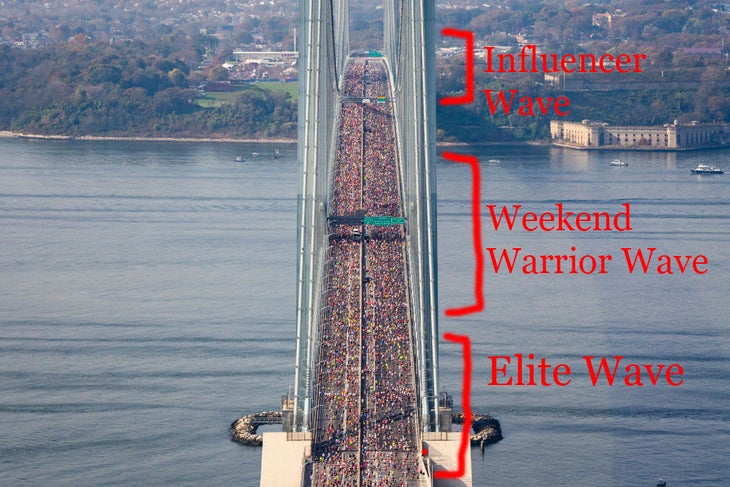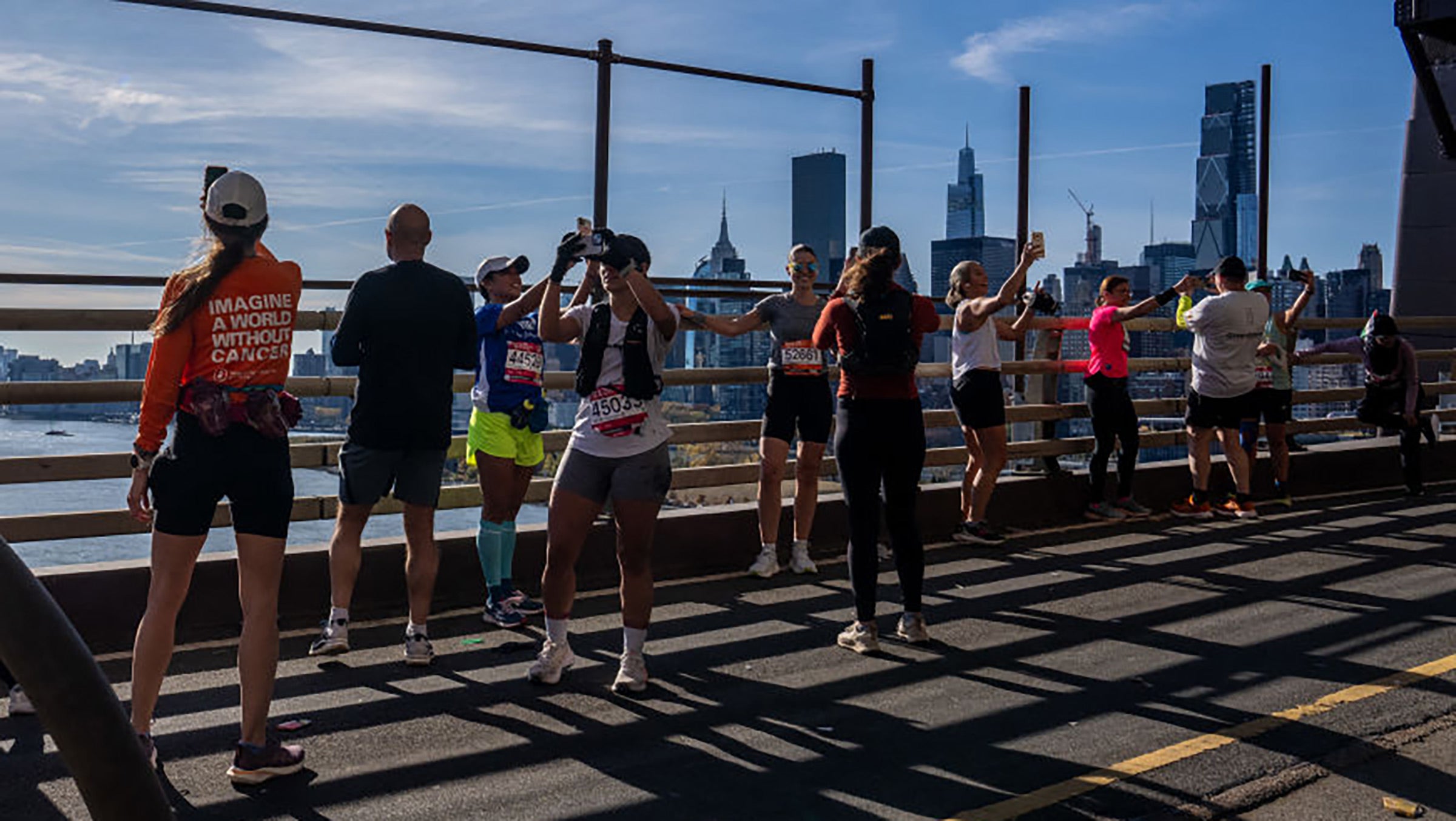The New York City Marathon is perhaps the most claustrophobic event in endurance sports. Fifty thousand runners squeeze shoulder-to-shoulder through the city’s avenues from the Verrazano Narrows Bridge to Central Park. Millions more cram the sidewalks to clap, bang drums, and wave .
Don’t get me wrong, it’s a fabulous scene, and I’ll always cherish my memories of running the marathon in 2016 and attending it multiple times as a journalist and fan. But the crush of humanity is so intense that participants, spectators, and even organizers all attempt to make themselves as small as possible for fear of accidentally tripping a runner or kicking a fan in the nuts.
So, when I saw the who recently flouted the marathon’s rules on proxemics, the whole thing made my skin crawl. This past Sunday, an internet-famous guy named Matt Choi was one of 55,646 people to complete the 26.2-mile run across the city’s five boroughs. But unlike the other 55,645 participants, Choi had two people on e-bikes ride beside him to film his every step. You see, Choi is an Instagram and YouTube celebrity, and he wanted to document his every step for his half-million followers.
Runner’s World, the camera team was a real nuisance: They zigzagged through the crowds and obstructed other runners. The final shot of Choi’s Instagram video shows a cameraman sprinting around exhausted runners just before Choi reaches the finish line. “Sub-three baby!” Choi yells as he crosses the line. Choi recorded a time of 2:57:15.
Choi’s antics didn’t go unpunished. The New York Road Runners, organizers of the marathon, disqualified him from the race, and also banned him from any of its future events. The decision berthed an impressive tonnage of stories:┬áThe New York Times, New York Post,┬áand even┬áPeople covered it.
The stunt also prompted a glut of angry comments on his Instagram posts and also on the . My favorite comment is from a woman who showed a photograph of the proper way to online influence while competing in a marathon (you hold your own phone out in front of you, duh!). Choi eventually apologized.
View this post on Instagram
As a lifelong endurance athlete, this story awakened my inner curmudgeon. I completed my first 5K run back in the mid-nineties, and since then I’ve tried just about every racing format out there, from Ironman triathlons, to Tough Mudders, to adventure races, and yes, even a . Like many others, I’ve seen the growing trend of participants videotaping themselves while rubbing elbows, or handlebars, with their fellow participants. And no, I’m not a fan.
During a gravel cycling race last year, I became puzzled when I heard another bike racer appear to have a conversation with himself. I turned around and saw that he was filming himself with his phone. I was annoyed but not surprisedÔÇömid-race videos from gravel influencers pop up on Instagram with growing frequency. And every time I watch one of these things, I wonder how the heck the content creator avoided crashing while filming himself or herself pedaling over bumpy terrain.
The Matt Choi story does feel like an inflection point for the endurance community. I scrolled through the hundreds of comments on Reddit and on the running forum LetsRun and found very few people advocating for the rights of mid-race content creators. Rather, this online discourseÔÇöcrude as it was at some pointsÔÇömakes me wonder whether runners, cyclists, triathletes, and yes, even bubble run competitors have become sick of the selfie stick-waving members of the community. I wonder if more runners and cyclists see mid-race video influencing as a dangerous nuisance that takes a person’s focus away from potholes and pedestrians. And I also wonder if more people, like myself, are sick of being the background extras in films we did not agree to appear in.
This reaction begs the question: what should we do with the Matt Chois of the world who want to document themselves running, cycling, or Tough Muddering their way to the finish line? Banning these members of the endurance community feels draconian. Prohibiting the practice feels impossible to enforce. And despite my curmudgeonly attitude, I do believe this videos may, in some strange way, provide inspiration to viewers. Perhaps, in some corner of the Internet, a sedentary person watched Matt Choi run past the Barclay’s Center and then laced up his Nikes and went for a jog.
Lucky for you, I have the answer, and I’m here to present my semi-serious solution to endurance sports’ content-creator┬áconundrum. Similar to how race organizers create separate waves for elite athletes, they should also make a distinct influencer wave, and place it at the rear of the field. I’ve used my rudimentary Photoshop skills to create a basic diagram below.

This wave will be the final one to start the marathon, bike race, or triathlon. And within the Influencer Wave, anything goes! Participants can hire an army of videographers to follow them via boat, bicycle, or helicopter. They can jog wearing a bonded cellular transmitter livestream their antics to the Internet in real time. They can pilot aerial camera drones or carry ten-foot-tall boom microphones. They can hire Steven Spielberg to capture their every move. In my vision, there would be zero rules governing this cohort.
Because, of course, these content creators are undoubtedly well-versed in the consequences of influencing in the wild. Thus, they won’t care if an errant cameraman bikes over their toes. Nobody will mind if they get smacked in the head by a selfie stick, or buzzed by a drone. If one trips while talking into the camera and knocks over a few others, everybody will be cool, right? After all, it will make for killer content.


